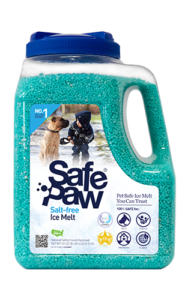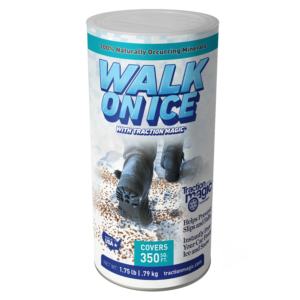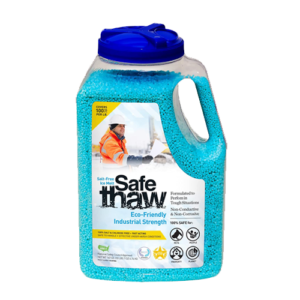New Rescue Pet & Winter Sidewalks: Hidden Dangers & Protection

Bringing a new rescue pet home is a joyous occasion. Their wagging tail or soft purr is a testament to the second chance you’ve given them. But as the winter chill sets in and those first snowflakes begin to fall, a crucial question arises: Is your new companion ready for the harsh realities of winter sidewalks?
Unlike a pet you’ve raised from a puppy or kitten, a rescue often comes with an unknown past. You might not know their exact breed mix, their previous living conditions, or any underlying health issues that make them uniquely susceptible to cold weather and toxic ice melt chlorides.
Let’s explore why rescue pets often need extra winter protection and what steps you can take to ensure their first winter in their forever home is safe, warm, and free from harm.
1. The Unknown Past:
Your rescue pet’s history is a mystery, and that mystery can translate into hidden winter vulnerabilities.
- Undisclosed Breed Mix: Is your fluffy “terrier mix” actually part thin-coated Whippet? Breeds like Greyhounds, Chihuahuas, and even many pit bull types have very little body fat and thin coats, making them extremely susceptible to cold. You might not know if your mixed breed carries these genes.
- Prior Exposure & Acclimation: Did they come from a warmer climate? Were they an outdoor dog neglected in the cold? Their previous life could mean they’re not acclimated to winter or might have suffered previous cold-related injuries (like frostbite to ear tips or paws) that aren’t immediately obvious.
- Underlying Health Issues: Undiagnosed arthritis, heart conditions, or kidney disease can be severely exacerbated by cold. These conditions make it harder for their bodies to regulate temperature.
Rescue pets often present with unknown breed predispositions and past environmental acclimation, necessitating a more cautious approach to cold weather exposure than pets with a known history.
2. Paw Pad Protection:
For any dog or cat that ventures outside, paw protection is crucial, but for a rescue, it’s paramount. Their paw pads might already be compromised.
- Delicate or Damaged Pads: A pet from a shelter might have never walked on rough, cold surfaces or may have pads already cracked from prior neglect or dehydration. These pads are highly susceptible to damage from ice and, more importantly, corrosive de-icing salts.
- The Invisible Threat: Standard ice melts (rock salt, calcium chloride, magnesium chloride) cause chemical burns, drying, and cracking. Residue can hide in seemingly clean snow.
- Your Action: Invest in high-quality dog booties that fit well, or a truly chloride-free paw wax/balm. These create a physical barrier. After every walk, thoroughly wipe and inspect paws with warm water to remove any lingering residue, even if you don’t see visible salt. Ingesting these chemicals during self-grooming can lead to GI upset or salt poisoning.
Pet-Friendly Ice Melt

Pet Safe Ice Melt – Safe Paw
The Original and the #1 Pet and Child Safe Ice Melt for over 20 years. Guaranteed environmentally safe – will not harm waterways and sensitive wetlands.
3. Core Warmth:
Don’t underestimate the power of a good winter coat, especially for a pet whose background you don’t know.
- Hypothermia Risk: Small, thin-coated, elderly, or medically fragile rescue pets are at high risk for hypothermia when temperatures drop below 45°F (7°C), with serious risk increasing below 32°F (0°C).
- Coat Up: A waterproof and insulated winter coat that covers their torso from neck to tail is essential. For cats that venture out (not recommended, but if they do), specialized cat sweaters or coats exist.
- Indoor Comfort: Provide warm, elevated bedding inside. Many rescues have spent time in cold kennels and will cherish a cozy, draft-free spot.
A pet’s unknown history necessitates proactive thermal management; a well-fitting winter coat is crucial for rescues, particularly as temperatures drop below 45.
4. Safety & Security:
Rescue pets can be more prone to bolting due to past trauma, anxiety, or unfamiliarity with their new surroundings. Winter conditions amplify this risk.
- ID is Paramount: Ensure your rescue has a properly fitted collar with up-to-date ID tags and that their microchip information is registered and current. A scared pet in a new home might bolt if startled by a loud noise or strange sight, and snow can disorient them.
- Leash Vigilance: Always keep your new rescue on a leash during walks, especially in early winter when snow can obscure familiar scents and landmarks.
- Antifreeze Awareness: Check your garage/driveway for antifreeze spills. Ethylene glycol is highly toxic and smells sweet. For a pet exploring a new environment, any spill is a deadly temptation. Safe Paw is free from ethylene glycol. It contains special glycols in permissible quantities and is safe if ingested accidentally.
Conclusion
Bringing a rescue pet into your life is a profound act of love. As winter approaches, that love means taking extra precautions, especially when their past is a mystery. Prioritizing paw protection with non-toxic solutions, ensuring proper warmth, and doubling down on identification and home safety measures are non-negotiable.
Prioritizing paw protection with non-toxic solutions is non-negotiable, and that starts with what you put down on your own property. Look for genuinely chloride-free alternatives to corrosive rock salt. Products like Safe Paw eliminate the risk of chloride burns and ingestion problems, ensuring your driveway is part of their safe zone.
By actively preparing for the specific challenges winter sidewalks pose to a pet with an unknown past, you’re not just preventing injury; you’re building trust and showing them their new life is one of unwavering care and safety. Let their first winter in their forever home be their best one yet!
FAQs
Other Ice Melt Products
Walk On Ice
Prevent slips at home, work or on the go, The handy disposable canister can be taken everywhere, with the same 100% naturally occurring minerals that provide instant traction on ice or snow.

Safe Thaw
Imagine an ice melt you can put down and never worry about. It won’t harm pets, kids and your property. That’s Safe Thaw. Unlike anything else on the market, Safe Thaw can change how winter affects our planet.


